Goat Breeding Prep Getting Started
Dairy goats are a joy to have and their milk is just as wonderful. If you want to keep enjoying that milk year around you will need to learn what you can about goat Breeding. This can be a little intimidating especially if you have not tried your hand at goat breeding goat kidding. Let’s see if we can help you get a good start today.
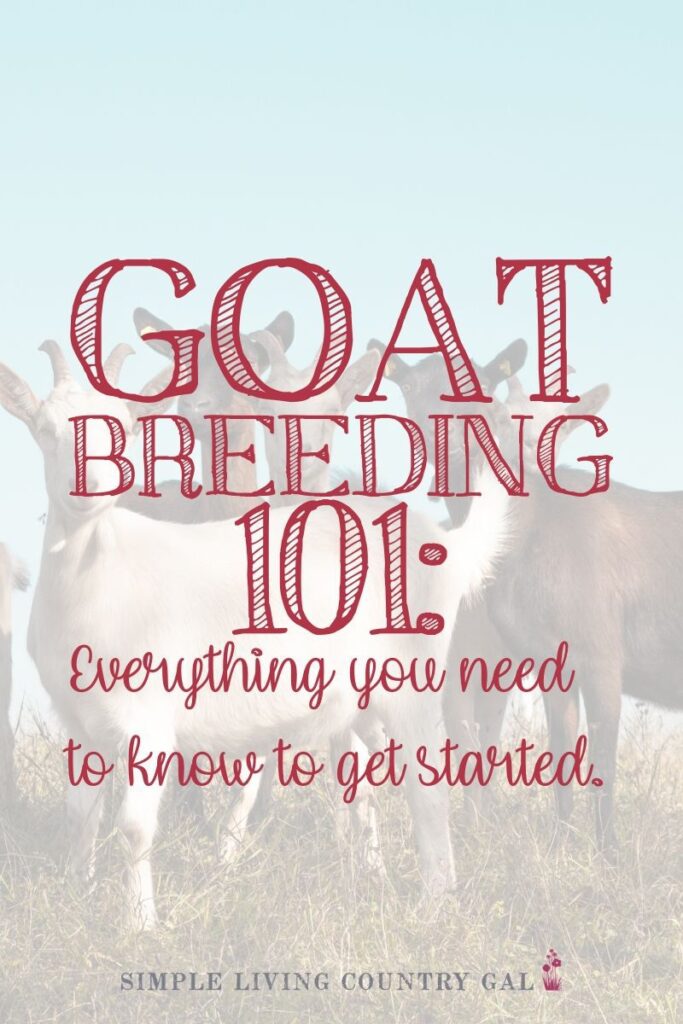
Raising goats is quickly gaining popularity and it’s no wonder. If you want 100% organic milk and do not have room for a dairy cow, then having a dairy goat is the next best (or even better) option.
Milking goats is only part of the story, there is more you will need to work into your care and maintenance of your goat herd. This post will help you get started with Goat breeding so you can keep that wonderful milk flowing all year long.
Disclaimer: In accordance with FDA guidelines, the information and products offered on this website are not intended to diagnose, treat, cure, or prevent any disease. I am not a medical professional. Before administering any medications to your animals please contact a veterinarian first.
READ: WHICH BREED OF DAIRY GOAT IS BEST FOR YOUR FAMILY
Why do I need to breed my goats?
If you have dairy goats because you love the milk then heads up my friend, breeding is now officially on your homesteading to-do list.
Yes, you must breed your dairy goats in order to keep the milk flowing.
Now, don’t panic…you can do this…and I am here to walk you through the beginning steps. I feel like I have been learning how to raise goats twice as long as I have actually been raising them. So, if you are new and you have questions…you have come to the right place.
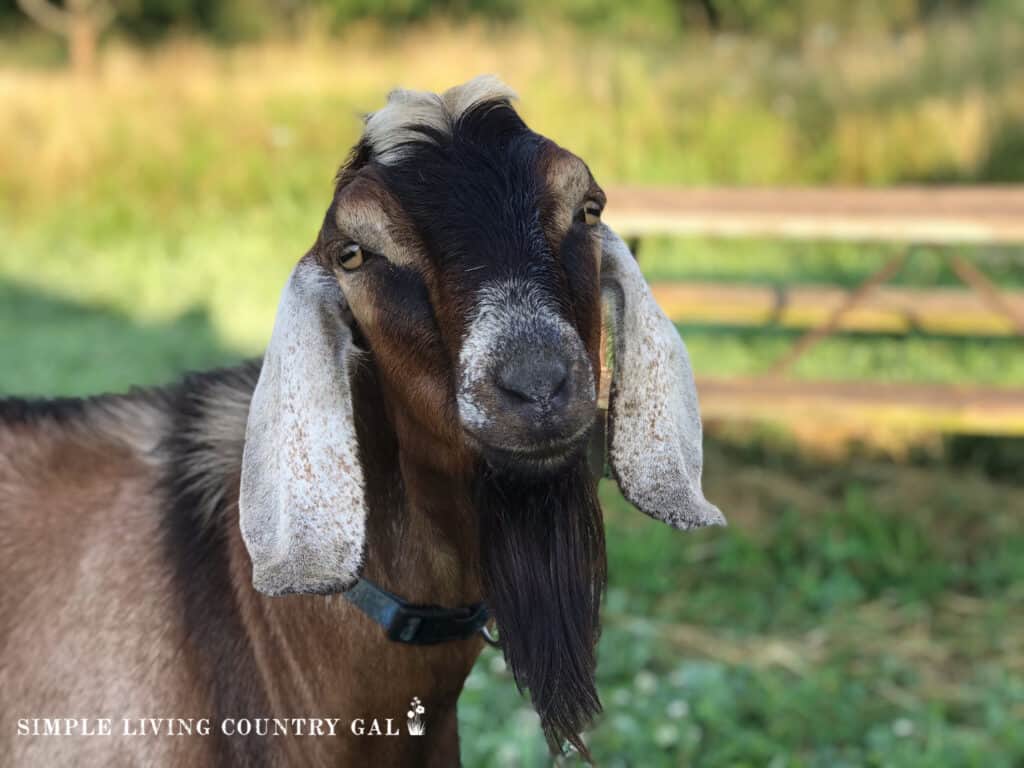
Dairy Goat Breeding 101: A Few Facts
Before we dive in, let’s quickly go over a few goat terms.
- Buck – A full-grown male goat.
- Buckling – A baby male goat.
- Doe – A full-grown female goat.
- Doeling – A baby female goat.
- Rut – A period when your buck is ready and willing to breed.
- Heat – A period when a doe is ready and willing to breed.
- Kidding – The act of giving birth.
Goat Breeding Fact #1
Most goat breeds are actually seasonal breeders. What that means is they are in heat seasonally every fall/winter. This can range anywhere from July/August to about January/February. There are a few breeds that can be bred year-round and if you have them you will want to keep that in mind.
- Nigerian
- Boer
- Pigmy
- Nubians (sometimes)
This does not mean, however, that if you do have a goat that is a seasonal breeder then you are safe to house bucks and does together in the offseason. Absolutely and positively not. I have learned this lesson the hard way.
If you have a doe and a buck together anytime throughout the year then you better be prepared for a surprise breeding. I have found the best way to be in control of when your goats have their kids is to keep bucks and does separate until you plant to breed them.
SLCG PRO TIP: If you must house bucks and does together you may want to invest in a buck apron. I have not used these aprons myself but I have heard good things about them. A buck apron is basically a heavy-duty apron that is made out of suede or leather. Similar to a welding waist apron. It is tied at the front underbelly of the buck and acts as a “shield” of sorts preventing penetration between the buck and doe. This is not foolproof, however, because as I said before nothing really is, but it is a nice safety precaution to have set into place on your hobby farm.
Bottom Line: If you do not want a surprise breeding then keep your bucks and does separately housed at all times. This, in my opinion, is the best way to keep surprise breedings from happening.
READ: HOW TO SAFELY HOUSE A BUCK ON YOUR HOMESTEAD
Goat Breeding Fact #2
Bucks can breed a female goat starting as early as 7 weeks old, so it is important to watch your young goat kids closely. If you do not have a separate area to house your young bucklings you will want to watch your herd close every day. I have never had an issue with kid/doe breeding since I raise the large Nubian breed of dairy goat. The young kids simply cannot reach, however, young bucklings can breed too young does and for that reason, you will want to move the bucklings out when they are around 8-12 weeks of age.
You can easily set up a kid pen with your herd by sectioning off a smaller section of the barn using pig steel panels or steel wire goat fencing.
Goat Breeding Fact #3
You should wait to breed a doeling until she is at least 8-10 months old or at a size that can handle the weight of your buck. This is just a good rule of thumb to follow and a good ethical animal-raising practice. An uncomplicated pregnancy is always our goal so the best advice to follow is to wait to breed your goats until they are physically ready to handle it.
On our homestead, we like to wait until our does are a year old before we begin goat breeding. Since we raise Nubians the bucks are on the large size and we want to make sure our gals can support his weight.
Goat Breeding Fact #4
The actual act of goat breeding only takes just a few seconds which means if you blink you may miss it. The first year I tried my hand at breeding I was convinced that none of my 4 does were bred. Why? Because I never saw my buck “do the deed”. That entire fall and winter I believed he had failed.
One afternoon I was outside with my husband working on the barn. I noticed one of my does standing in the corner with her head pressed against the wall. I ran over to her knowing that this is a sign of a goat in labor.
READ: 13 KIDDING SIGNS – HOW TO KNOW YOUR GOAT IS IN LABOR
Sure enough, just a few short minutes later she gave birth to a healthy set of twins. And you know what? Like clockwork, the next several days brought even more, goat kids as the rest of my little herd kidded.
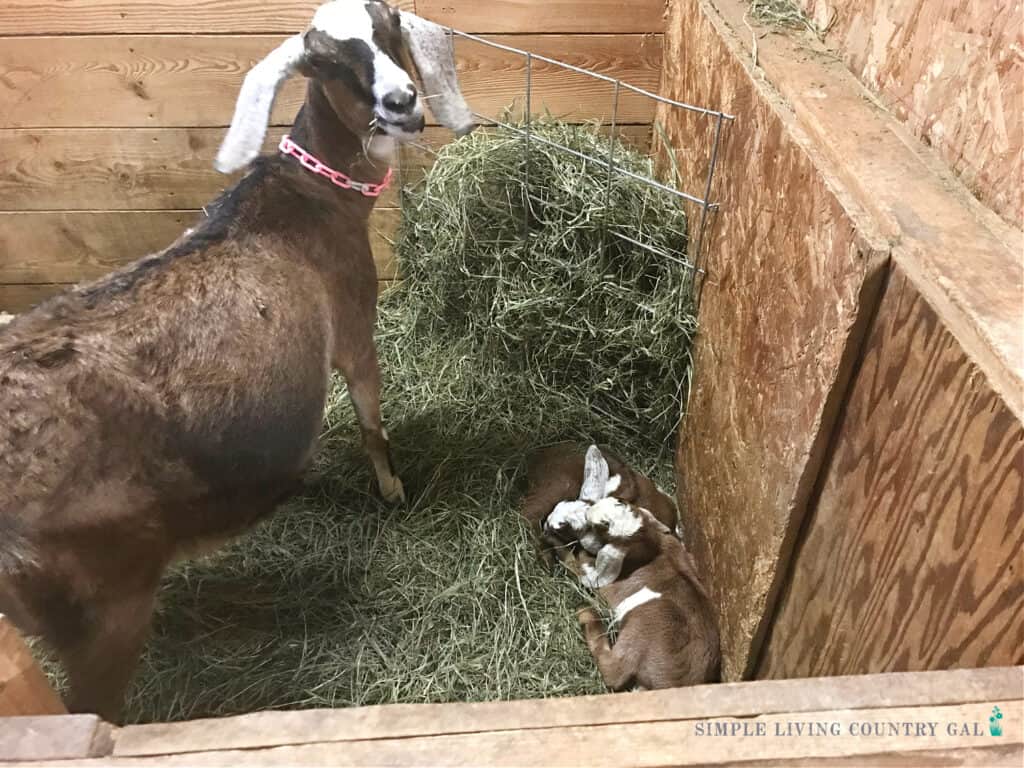
That year I learned that breeding is quick and if you blink you definitely will miss it!
Goat Breeding Fact #5
You actually do not need to own a buck for goat breeding. What you can do is rent a buck and set up “dates” either at your home or at the bucks. This is a great option for the brand-new goat owner or someone with a small setup.
To find a buck for rent simply contact your local feed mill or check out the want ads and even Facebook or Craiglist for options. The cost to rent a buck will vary depending on location.
Here in Northwestern Pennsylvania, a rental can start anywhere from $30-$75 for the first doe and an additional $10-$15 for every doe thereafter. As with anything, you pay for quality. If you want a rockstar buck, plan to spend a much higher price.
READ: Driveway Breeding Dairy Goats
Goat Breeding Fact #6
A doe goes into heat every 21 days and the actual cycle lasts 1-3 days. I highly advise you know the cycle of each of your does. When you only have a window of 3 days to breed, knowing the 21-day mark will make things so much easier for everyone.
SLCG PRO TIP: Using a calendar like this one is an easy and inexpensive way to keep track of heats quickly. I like to keep track of all my goat care in this calendar so I can very easily reference things. The easier it is the more likely I am to use it. At the end of the month, I will transfer notes to individual files for each goat.
USE OUR GOAT BREEDING CALCULATOR: If you want to know just when your goat will be due to kid, you can enter the breeding date here and get your target due date!!

Knowing just when the best time is to breed your goats will all depend on when you want them to kid. If you live in a cold area as we do, having kids in January may not be the best idea. Baby goats are born wet and if the temperatures are below zero you will need to be there to assist with kidding in order to help dry off any kids before they freeze.
For us, we prefer to kid when the weather is a bit warmer and that means April-June. To know the breeding time simply pick your kidding target date and count backward. Once you have your date make a note on your calendar so you can get prepped in time for the actual breeding to begin.
USE OUR FREE CALENDAR HERE: [widget id=”custom_html-22″]
Goat Breeding Fact #7
A buck in rut is a determined buck. If you have bucks on your homestead please make sure they are housed in a secure structure. If a buck is in heat and he wants a doe, only a sturdy fence will keep him in. Take the time to check your fence every few days to make sure nothing is getting loose. An unplanned pregnancy can quickly derail any breeding plan so take the time before rut to make sure things are secure.
READ: How to house a buck so you can breed.
Goat Breeding Fact #8
Bucks in rut are very smelly, and some goats are more smelly than others. There is simply no better way to say it. When your bucks are young the smell will not be too bad, but as the buck gets older that smell can get pretty offensive.
For that reason, you will want to house your bucks far away from your milking area because that smell can turn the taste of the milk off. Fresh goat milk, if given the chance, will absorb any lingering smells so you will want to get that milk inside as quickly as possible to ensure it tastes great. Trust me on this. I like to pour our milk into mason jars while still in the barn. By sealing things up quickly, I reduce the chance of our milk tasting “off”.
Also, never ever touch a buck in rut without gloves on. That smell can get into your skin and even if you can’t smell it…every other person in the world can.
Bottom line: When working with bucks in rut, if you wear gloves and use soap you will be fine. 🙂
How to Breed Your Goats Prep Checklist
Now that we have gone over the most important facts, let’s talk about the process of how to breed your goats.
Goat Breeding Checklist
- Know the date you want your kids to hit the ground and backdate to your breeding time.
- Be sure your goats are in optimal health to handle the act of breeding. This is necessary for not only your does but for your bucks as well. You can read the article below for the very best way to do that.
- Find a secure area to house your buck and does during breeding time. You can do this for just a few hours at a time or just put them together for a few months to be sure your does get bred.
- Be sure your doe is in heat. This is especially important to reduce the chance of injury. If you doe is not in heat she will do all that she can to get away from a buck. If your buck is young and over-aggressive your doe can quite easily get hurt. I find it is best to “test” out your does by walking them near the bucks pen to see how everyone acts. Does the buck get excited? Does your doe stand still for the buck to smell her or does she spook and try to get away?
- Don’t leave new bucks or new does unattended. A young buck can totally “over-breed” a doe and if that is the case you will need to step in. Don’t panic if this happens just remove the doe for a few hours to allow them both to get rested up and reduce the risk of injury.
- Watch your buck. Once a doe is bred the buck will usually leave her alone. If you see after 21 days he is still leaving her be, then you most likely have a bred doe and you can mark things on your calendar!
Now that you have a good overview of goat breeding, let’s dive into preparing your goats nutritionally for breeding season. This is an important step to take before you actually breed your goats. Prepare them to handle the stress and physical side of breeding and you will be one step closer to a healthy and happy goat herd.
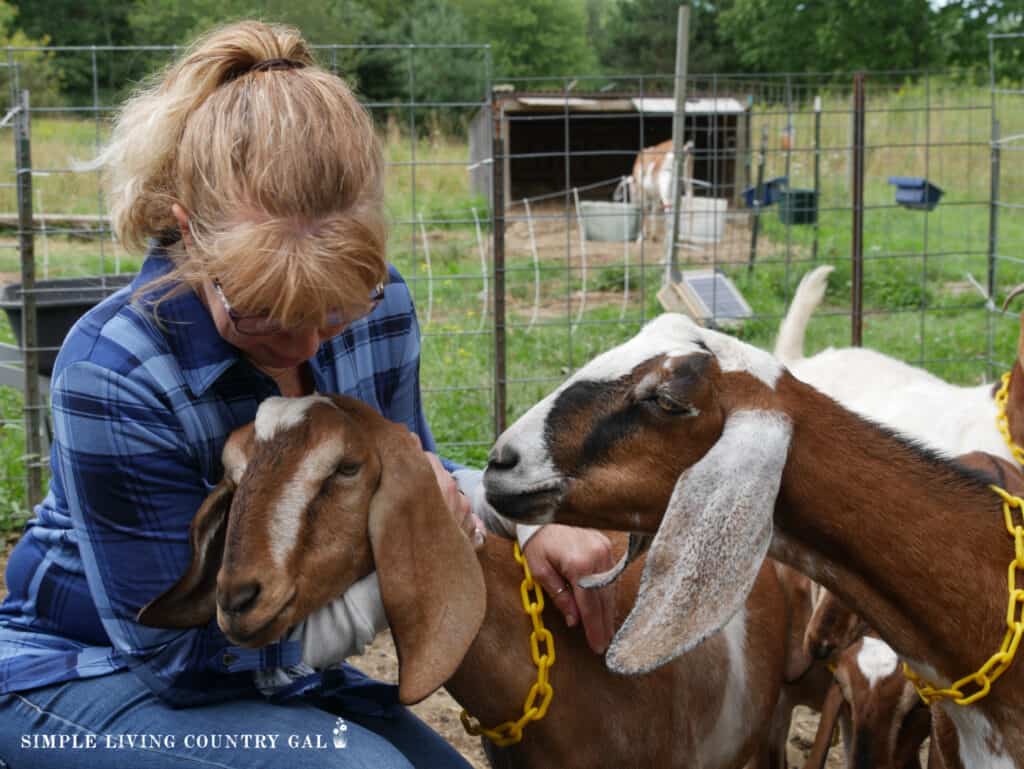
Goat breeding is the most enjoyable, exhausting, rewarding, and amazing time on the homestead. With a little preparation on your part and safe and secure place for your goats to breed, you will be rewarded in a few short months with a barn full of adorable goat kids.

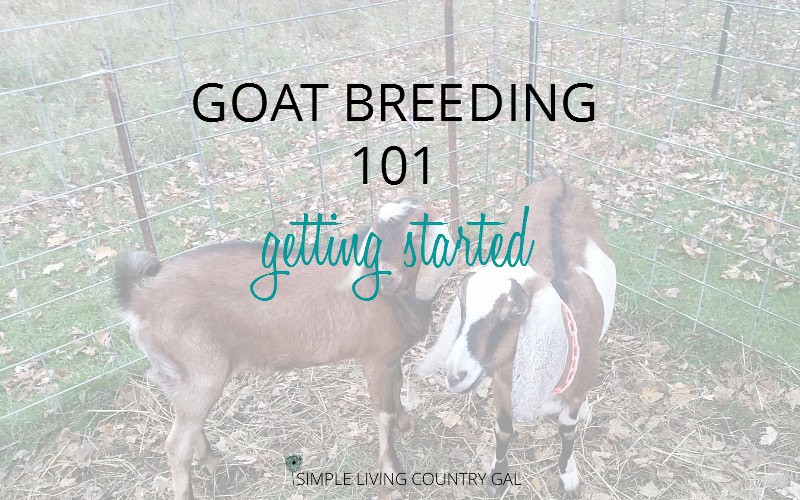
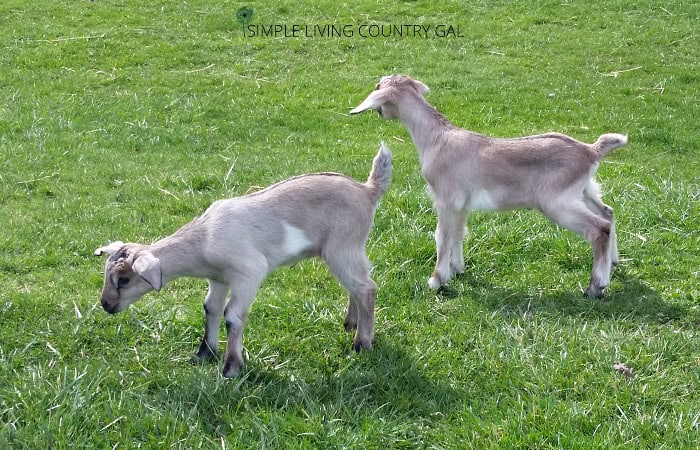
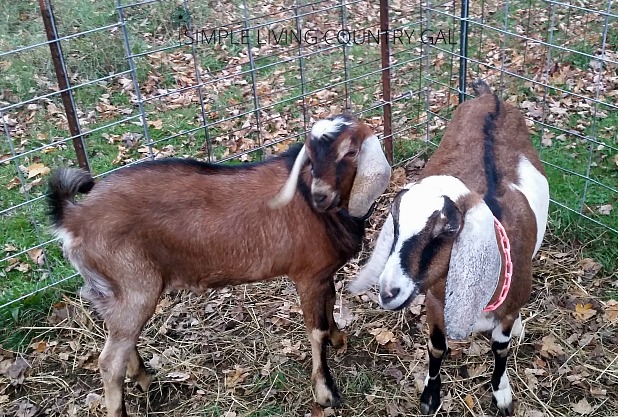
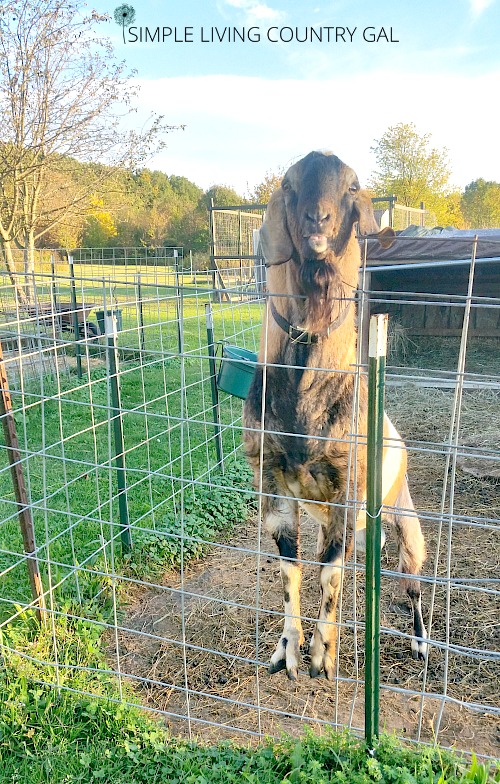
Awesome info! Goats are definitely on my shortlist – hopefully soon! Thanks for sharing on Homestead Blog Hop!
I enjoyed the lecture it is so precise.. Love to have contacts of where I can purchase viable boar and Kalahari goats with price list.
Sorry, but to find goats you will need to look in your area. I would do a google search for your location and the breed of goat you are looking for.
Good Luck!